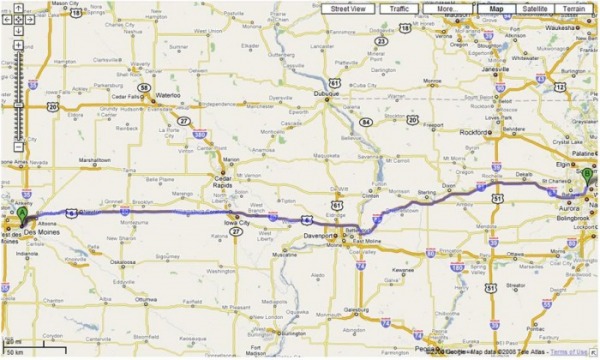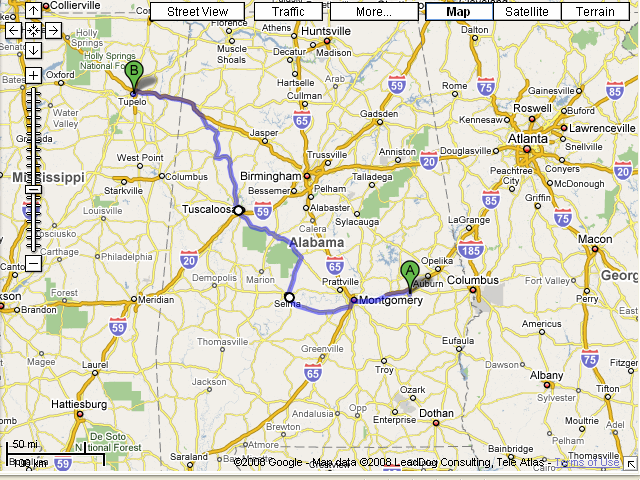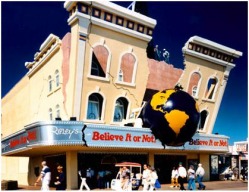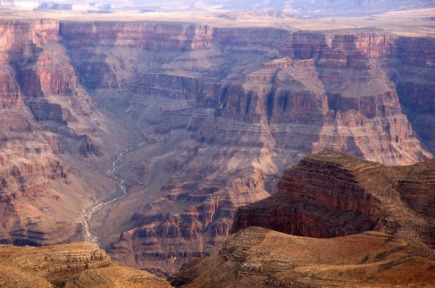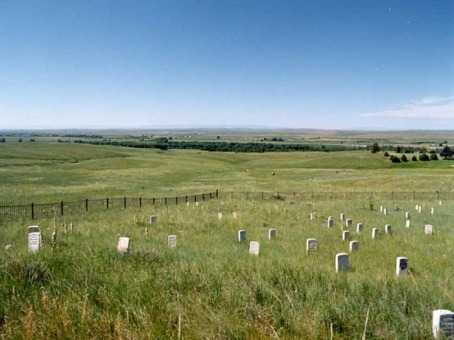Bill Bryson Biography
Bill Bryson was born William McGuire Bryson on 8th December 1951. He was born in Des Moines, Iowa. His birthplace was the influence for his novel The Lost Continent (1989).
He writes travel books, that are mostly humourous and based on his own experiences. He also writes books on the English Language and Scientific subjects.
He dropped out of Drake University in 1972 and decided to backpack across Europe, which he did so for four months. His travels inspired him to write books about his adventures. Neither Here Nor There: Travels in Europe (1991) documents another trip to Europe he made twenty years later.
He visited the U.K on his travels and decided to settle there for a while, as he had landed a job in a hospital in Surrey. There he met his wife- a nurse named Cynthia. His time in the U.K is documented in Notes from a Small Island (1995).
Later on he worked at newspapers such as The Times and The Independent. He then moved back to the U.S-New Hampshire in 1995, which influenced his novel Notes from a Big Country (1998).
He has now returned to the U.K and is currently living in Norfolk.
Synopsis' of Chapters in The Lost Continent
Chapter 1
Bill Bryson introduces his readers to his hometown-Des Moines. He talks of the type of people you'd expect to meet, plus the lack of interesting things there is to do.
He discusses the trips he and his family took to places such as Gettysburg. He begins to set up an itinerary to take him around America.
Notes
Bryson makes several comparisons in this chapter in order to describe the people in Des Moines.
When talking of the teenage girls in Iowa he says'...and naturally fresh-smelling as a basket of fruit.' P.15. He is describing the smell of these teenagers and comparing their smell to fruit, as if they are delectable. When talking of the older women in Iowa he says '...looking like elephants dressed in children's clothes.' P.17. He is comparing these women to elephants due to their large size and describing how peculiar it is to see the clothes they are wearing.
Chapter 2
Bill Bryson starts off by talking about the journey to his grandparent's house and the places he passes-through Prairie City, Pella etc till finally he reaches Winfield.
He then talks of the Mid-West and how directions are extremely important to them yet they may be wrong about their directions. He wonders how they would always know where north is.
He begins talking of his grandmother and how she gossips about the locals.
He returns back to his grandparents house to find it has all changed much to his disappointment.
Notes
Map of journey-
Chapter 3
Bryson is driving along Highway 218 to Keokuk. He talks of the different routes you'd expect to see 'en route'. In Illinois he stops at a place, which he calls Dullard to rent a room in a motel. The receptionist has butterfly glasses and a beehive hairdo, similar to other women.
He goes to a cafe called Chuck's which he says is apt, as the food is revolting. He talks to a couple of the woman there, one of which also has butterfly glasses and a beehive hairdo.
He returns to his motel and watches the television, which makes him see this place in a familiar light, as Dr. Joyce Brothers is on the show he is watching.
Notes
Geographical dialect is shown in chapter 3 on page 46 when the receptionist says 'Help yew', this shows her regional origin. Also she says 'tayax'instead of tax, which is expected of people from Illinois and helps the reader understand where she is from and the accent she has.
Chapter 4
Bryson goes to Hannibal to see Mark Twain's childhood home. He talks of movies and actors of his childhood and says these actors would be in his perfect town-Amalgam (to join). Amalgam would be a lot like the locations Hollywood movies are set.
He discusses the lack of signs in America whilst travelling to Springfield, which proves to be a disappointment.
He goes to New Salem- Abraham Lincoln's hometown, which has several log cabins that is very repetitive for the visitors.
He takes Interstate 55 south etc to Carbondale, he rents a room and goes to Pizza hut. Whilst there he criticizes K-mart but goes to K-mart to see what sorts of things he can buy.
Notes
Bryson effectively builds up his jokes in this chapter.
On page 55 whilst Bryson is in Mark Twain's boyhood home he meets a man who is also a visitor, they share polite conversation but then they say-
'Would you say the house is just like Twain described it in his books?'
'I don't know, I've never read one of his books.'
The polite conversation builds up to the joke, that the man has never read a Twain book yet he is at his childhood home.
Chapter 5
Bryson writes about billboards and different signs he saw, travelling, as a child i.e spook cavern (personal anecdote)
Also, he discusses idiolect of those in Kentucky and how certain places are pronounced i.e Cairo as Cay-ro.
He reaches Tennessee and says it's on the bible belt, he knows this due to the signs he sees.
Signs and billboards are the main focus of the chapter.
Notes
There is a good description on page 73.
'It really was attractive countryside better than anything I knew Illinois possessed, with rolling hills of winebottle green, prosperous looking farms and deep woods of oak and beech...'
This is an effective description of Highway 127 south.
Chapter 6
Bill Bryson is in Mississippi, writing of the mean nature of southerners-racists etc.
He explores how racism has changed by going to the university of Mississippi and sees whites and blacks living in harmony.
Also discussed is the change in Playboy and the 'secret' stash men had of unsuitable magazines in the 50's.
Notes
Idiolect of southerners is shown on page 83 where a State Trooper says 'yew' instead of you. He says 'lack' for like.
Also shown on page 85 is the woman's idiolect at the tourist information office. The receptionist says 'skwaya' instead of square. 'Rat' is also used instead of right. This shows the words affected by their accent.
Chapter 7
Bill Bryson visits Elvis Presley's birthplace in Tupelo. From there he travels to Columbus, which is close to his desired town-Amalgam. However the southern accent is too much to bear.
He travels to Tuscaloosa for gas and meets a man with the same dislike for the southern accent. He drives to Tuskegee and writes about the increased amount of African Americans and the lack of suitable education in its university.
Notes
This is the map of the journey Bryson took in this chapter.
Chapter 8
Bryson travels to Warm Springs through Pine Mountain to see the Little White House- where Roosevelt lived and died. He writes of the objects he sees and the elderly people he encounters.
From here he travels to Savannah, which he is very impressed with, equally so in Charleston. This was his next destination after Beaufort, South Carolina, which he calls 'officially unwelcoming.'
Notes
There is a running gag of scenic routes in the book. Bryson passes, supposedly, scenic routes which he says are not so scenic.
On page 107, he says ' It wasn't unscenic particularly, it just wasn't scenic. I was beginning to suspect that the scenic route designations on my maps had been applied somewhat at random.'
Chapter 9
Chapter 9 starts off with the journey from South Carolina to North Carolina. He visits Biltmore-built by George Vanderbilt. However he travels to Bryson City('a modest indulgence') as Biltmore is too expensive.
He stays in Bennett's Court motel, which he says 'clearly would be the motel in Amalgam.' From here he travels to see The Great Smoky Mountains National Park.
He ends up in Gatlinburg to visit Ripley's believe it or not museum.
Notes
The Ripley's believe it or not museum is international. There is now a museum in Piccadilly Circus. This is a picture of the museum in Gatlinburg.
Chapter 10
Bryson travels to the hills of Appalachia in search of the English settlers from Roanoke Island, who could be the Melungeons ( they are unique as they have fair hair and dark skin). He is unsuccessful.
Notes
Melungeons are known as 'tri-racial isolate' groups. They could be descendants of the group of 115 English settlers from 1587.
On page 136 there is use of a short sentence.
'It was late afternoon, nearly dusk when I reached. Sneedville'. This is used to show his dislike of the place and also the place name.
Chapter 11
Bryson is in search of Booker T Washington National Monument- thinking the easiest way is through Critz , which he travels in circles trying to get to.
He changes his mind about the monument and travels to Williamsburg instead. He admires the preservation of Williamsburg.
He then travels to Mount Vernon-George Washington's hometown, whom he calls a 'great guy' and a 'hero'.
Notes
On page 148, a previous joke is brought up.
'Gosh Bobbi, this place is beautiful'
This is taken from the joke in page 1, where Bryson criticizes the stereotypical lifestyle of those in Des Moines- marry a woman called Bobbi etc.
Chapter 12
Bryson is in Washington- he writes of his time spent there as a child. He writes about the impressive features there is- such as The White House, which is 'smaller than you'd expect'. Whilst in Washington he sees the Prime Minister of Japan- Yasuhiro Nakasone who waves at him. He then travels to Philadelphia.
Notes
Personal anecdotes from Bryon's childhood are used repeatedly through the book and chapter 12.
From page 152-154 he writes of a man that got shot and also discusses the seating of races in restaurants- racist views. White people got the best seats but now tradition has changed to allow everyone to sit anywhere they want.
Chapter 13
Bryson is in Philadelphia where he sees two of his friends from Des Moines-Hal and Lucia. He drives to their home, as they have offered him a place to stay for a night. He drives past Fairmount Park, which he calls 'perfection'
He then travels to Gettysburg to visit the battlefields he saw as a child. From here he goes to Bloomsburg to see his brother and his family. Whilst there he visits Lancaster County to see the Dutch, Mennonites and Amish. The family go to a Pennsylvania Dutch restaurant, where they eat large amounts of food.
Notes
Amish people live in conditions that are suitable for 200 years ago. They isolate themselves from the modern world and live in small communities. They like to live a simplistic lifestyle, where they will not exploit the earth's resources.
Chapter 14
Bryson travels to New York via bus, which proves to be an interesting experience due to the people he encounters- a haggard, chain smoking woman who burps a lot, for example.
He rents a room in a hotel in Times Square, which is so small that he can 'touch all four walls at once'.
He explores Times Square and is surprised at the amount of tramps he sees. He also writes of the strip clubs there and reminsces over the last time he was in New York with his friend Stan.
Notes
Throughout the book different places result in Bryson reminiscing about childhood experiences.
On page 187 it says 'In the evenings, when my brother and his wife went out, Stan and I would sit with binoculars and scan the windows of the neighbouring buildings.' He is remembering the time him and Stan were in New York with his brother.
Chapter 15
Bryson writes of Columbus day and how it is not deserved, as he believes the Vikings discovered America. He wishes to travel to New England, which he does through the following route (also shown on map)- Connecticut ('pleasant') to Rhode Island ('microscopic') to Newport ('shabby') to Cape Cod ('picturesque'), until finally he reaches New England.
Notes
Map of journey described above..
Chapter 16
Bryson is in New Hampshire, where he says the features (churches etc) stand incongruously and mollify the ugliness.
He joins Route 1 in order to reach Maine, he passes through the White Mountains after abandoning Route 1. This leads him to Littleton where he stops for the night at Littleton Motel with the 'cleanest rooms in town'.
He goes to the Topic of Town restaurant for dinner, which has an over-polite, enthusiastic waitress.
He explores the town such as the church commemorating soldiers and those who died at a young age.
Notes
Repetition occurs between Bryson and waitress-'Thank you' he says, 'You're welcome' she says.
This is on page 211 and is used to emphasise the polite exchange and how Bryson needs to continue using good manners, as he has already said thank you a number of times.
Chapter 17
Bryson is in Cooperstown where he visits the Baseball Hall of Fame, which he regards as'close to a religious experience'.
He stops at a motel in Elmira where he dines at a restaurant attached to a bowling alley. However this goes against his rules for public dining.
He travels to Cleveland, where he begins to reminisce, due to his discovery of the lack of unsuccessful broadcasting there is in America, about his time spent at KCBC radio.
Notes
On page 230, the joke about identical sounding names are mentioned again.
In regards to the arson attack, reported on the radio, the names of children caught in fire are 'Ronnie, Lonnie, Connie...'. This is a running joke and is seen as stereotypical for southerners who are seen as'white trash'.
Chapter 18
Bryson spends the night in Dearborn so that he doesn't need to spend the night in Detroit for two reasons. 1) The amount of murders and 2) He wants to see the Henry Ford Museum. When he gets there he calls it 'breathtaking'.
From there he drives to Michigan so that he can travel by ferry to Mackinac Island. Whilst there he calls it 'pretty incredible'.
He arrives back to the mainland to make his way to Wisconsin. Whilst on the journey he stops to buy a Cornish Pasty. The man selling them is excited to see a real Englishman-not knowing Bryson is from Iowa. Bryson is disappointed with the food calling it 'bland'.
Notes
On page 233 statistics are used to show the increasing amount of murders in Detroit and possibly suggests that Bryson was too scared to go to Detroit, therefore he looked up statistics.
He says ' In 1987 there were 637 homicides in Detroit, a rate of 58.2% per 100,000 people, or eight times the national average'.
Chapter 19
Bryson begins the chapter by writing about the hospitals in America and comparing them to the NHS.
From Wisconsin he travels to Iowa where he stops at Iowa City to meet his old school friend- John Horner in Fitzpatrick's bar. They talk about how things have changed in Iowa and how the students in the University of Iowa are interested in getting a education and not taking drugs.
Bryson stays the night at his friend's house and departs for Des Moines in the morning. He arrives home and sees his mum, he ends the chapter saying 'it was good to be home'.
Notes
Bryson is extremely pleased to be home in Des Moines even though he illustrated a strong dislike in chapter 1.
On page 259, Harper and Bryson are talking, the readers can now understand the repetitive lifestyle Bryson mentioned in page 1 (work in a firestone factory, marry a woman called Bobbi etc). We see this as Harper still 'smokes dope' even at the age of 35.
Chapter 20
Bryson is heading to Nebraska, however he delays his trip for a while and heads to Winterset-birthplace of John Wayne. Finally he begins his travel to Nebraska, which he calls 'pleasant'. From here he drives to Kansas, which he calls an 'agreeable place'.He ends up in Holcomb to investigate the surroundings of the Clutter murders- a case inspiring Truman Copote's book 'In Cold Blood'. Bryson is surprised that the children at the local high school do not know about the case but a teacher explains how the libraries in the area have banned the book.
Notes
There is an effective comparison on page 271. Bryson says-
'The landscape was a sea of white grass, fine as a child's hair'.
This is successful in describing the texture of the grass.
Chapter 21
Bryson is in Colorado where there is nothing but mountains. He finds it a challenge to drive up the mountains, going over the rickety bridges etc that are similar to those in movies.
From here he travels to Victor, which he says is a 'wonderful sight'.
Bryson then drives to Cripple Creek for lunch and calls it 'touristy'.
He ends up in Leadville through Twin Lakes. He calls it 'outstanding'. He concludes the chapter in Timberline Motel 'dreaming happy dreams'.
Notes
On page 283, Bryson refers to movies to make a point about the much expected rickety bridge joining the mountains he drives up. He says -
'It was the sort of bridge on which, in the movies, a slat always breaks, causing the heroine to plunge through up to her armpits'. From this the reader is able to gain an understanding of the bridge he had to cross.
Chapter 22
Bryson is heading to New Mexico, Sante Fe in particular to go to one of the colleges to visit his niece. He heads south on US 285, which is surrounded by areas of 'incredible natural beauty'. He finally reaches Sante Fe but his niece is not on site, he calls the place 'unstimulating' and goes to a plaza, where he gets extremely drunk. In the morning he meets his niece.
He takes Interstate 40 and reaches Gallup, calling the landscape 'bleak'. From here he decides to go to Arizona, which he also thinks is bleak.
He begins another journey to Flagstaff but hears the weatherman on the radio announcing snow is due.
Notes
Bryson uses good imagery on page 293 where he says, '...watching the stars fill the pale blue desert sky'. This allows the reader to picture the sky Bryson is looking at and understand the beauty of it.
Chapter 23
Bryson is visiting the Grand Canyon, which he and the other visitors cannot see due to the weather (snow and fog). However the fog clears whilst he is at the edge, therefore he is able to see everywhere.
After that he heads north off Highway 89 toward Utah. From here he consults his Mobil guidebook, where he sees that film/tv companies use a town called Kanab (the next town). He goes there and finds that films such as Butch Cassidy and the Sundance Kid were shot there.
He visits Zion National Park, which he calls'incredibly beautiful' with its 'lush canyon'.
At the end of the chapter he is driving to St George. He stays at the Oasis motel and dines at Dick's Cafe. Nearby is a Mormon Church, which he writes about saying, 'Mormons sure do love wide streets' etc.
Notes
'The scale of the Grand Canyon is almost beyond comprehension. It is ten miles across, a mile deep, 180 miles long' Page 303.
Chapter 24
Bryson is in Las Vegas. He gets a room in a motel 'at the cheaper end of the strip'. He explores and ends up in Caesars Palace, which impresses him due to the surroundings-moving sidewalk etc.
He writes of the Romanesque decor and begins to play one armed bandit, where he wins money but then loses it.
In the morning he takes Interstate 15 south to California. He writes of the increasing high temperature in Death Valley,'where the highest temperature ever recorded in America, 134 degrees was logged in 1913'.
He goes to L.A, behind the town of Mojave where 'the city's smog was threaded through the hills'. The hills are those you would expect to see the Lone Ranger and Zorro riding their horses on in the tv shows.
Notes
Senses are described in this chapter. For example on page 313, Bryson says 'The noise was intense-the crack of one armed bandits, the spinning of thousands of wheels, the din of clattering coins when a machine paid out'.This helps to establish a setting. In this case it is the casino.
Chapter 25
Bryson wants to go Sequoia National Park, where his uncle and male partner sent his family a postcard from. There is a picture of a tree-General Sherman that is the 'biggest living thing on earth' that you are able to drive into. Bryson reminisces of the times he would try to make his parents go to California just so they could go to Sequoia National Park. However when he is there he calls is a disappointment. From here he goes to Yosemite National Park, which he thinks is 'incredibly, mouth-gawpingly beautiful'.
He drives onto Sonora 'through a tranquil sunset' and he gets a 'grossly overpriced' room.
He ends up in Wells, Nevada 'the sorriest, seediest, most raggedy-assed town' he'd ever seen.
Notes
On page 327 Bryson sets a positive up negatively. He says '..a let down of monumental proportions. It is incredibly, mouth-gawpingly beautiful'.The readers are expecting him to dislike Yosemite, as it seems like he is a very hard man to please but he loves it. This surprises the reader and is the effect Bryson was aiming for.
Chapter 26
The chapter starts off seriously, with Bryson discussing his grandmother who moved in with his family in 1958 as she had been diagnosed with cancer of the colon. He talks of Mrs Goodman who cared for his grandmother but later died of cancer, he takes the time to apologise to her because she believed cancer was contagious.
He is making his way to Twin Falls, Idaho which compared to Nevada is 'greener and more fertile'. He heads to Ketchem where Ernest Hemingway 'spent the last year of his life and blew his brains out'. Bryson then decides to travel to Idaho Falls calling it an 'agreeable little city' when he is there he mocks the lack of crime the youths in Idaho Falls participate in- possessing drugs etc. He goes to Happy's Chinese Restaurant where he overhears a conversation with a Swedish woman and an American man talking about what country she prefers-Sweden or America. She chooses Sweden, which makes Bryson think about what others would say and he discusses the beauties of America. These are actually very negative.
Bryson then travels to Wyoming ending up in Livingston to rent a room in Del Mar Motel.
Notes
The start of this chapter is more serious than previous chapters, Bryson talks of his grandmother and her carer who thought she could also catch cancer. He then apologises to her in a way, which is still humorous- 'I've always wanted to commemorate her in some small way and I thought that here would be as good a place as any, especially as I had nothing of interest to tell you..'
Chapter 27
Bryson is at Custer Battlefield National Monument. He talks of his dislike of Custer saying 'he screwed up in a mighty big way'.
He is in Sundance, Wyoming where the Sundance Kid was named after, after serving time in a prison there. He goes to a restaurant crowded with Shriners, he is not allowed in for that reason.
The chapter is focused around Wyoming and the lack of restaurants.
He ends the chapter in South Dakota, where he goes to Wall Drug drugstore. He is disappointed as it doesn't have 'a baseball cap with a plastic turd on the brim'.
Notes
This a picture of the Custer Battlefields where Bryson visits in this chapter.
Chapter 28
It is the final part of Bryson's journey and he starts of the chapter in South Dakota, he stops for the night in a town called Murdo.
When he begins his journey in the morning he hears on the radio that a tornado is due to hit the region. He discusses how his grandparents would sleep through a tornado and not know what it is or even care, they would wake up in the morning to'a swath of destruction stretching across the landscape in two directions and skirting the very edge of their house'.
Bryson passes into Minnesota. He says it is nice to be back in the Mid-west with its rolling hills etc. From Worthington, Minnesota he passes onto Iowa, when he reaches Iowa the sunlight surprises him, he says he never knew Iowa could be so beautiful.
He goes to Storm Lake and also thinks it is beautiful, this is quite surprising as he has criticized Iowa since the start of the book.
In the restaurant he stops at the waitress has 'butterfly glasses and a beehive hairdo', which has been a running joke since the start as many woman in Iowa have this type of style.
His journey has come to an end and he says, 'I visited all but ten of the lower forty-eight states and drove 13,978 miles'. He reaches Des Moines and ends the chapter with '...and for the first time in a long time I almost felt serene'.
Notes
'I passed back into Iowa. As if on cue, the sun emerged from the clouds. A swift band of golden light swept over the fields and made everything instantly warm and spring-like' - page 375.
This is an example of pathetic fallacy, where the weather reflects the mood. Bryson, even though he shared a great dislike for the place, is happy to be back in Iowa. This is portrayed through the weather and shows that he likes Iowa, especially Des Moines after all.

